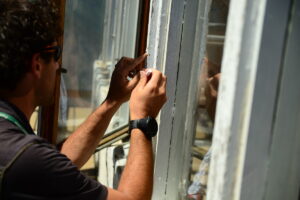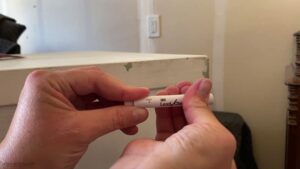NYC Local Law 31 is a regulation passed in August 2020 as part of a broader effort to combat lead poisoning in New York City. The law mandates that multifamily building owners conduct certified inspections for lead-based paint, especially in older buildings where lead paint is more likely to pose a health risk.
It focuses on proactive measures to protect residents, particularly children under six, who are most vulnerable to lead exposure. But what does this mean for property owners and tenants? Let’s break it down step by step.
Learn about NYC Local Law 31 in this blog.
Why Was NYC Local Law 31 Enacted?
Did you know that lead poisoning can cause developmental delays and lifelong health issues, especially in young children? Recognizing these dangers, NYC Local Law 31 was designed to address lingering risks from lead-based paint, a common hazard in buildings constructed before 1960. While laws targeting lead have existed for years, Local Law 31 adds stricter inspection and remediation requirements to ensure safer living conditions.
Changes Introduced by Local Law 31
When NYC Local Law 31 was first introduced, it made some big updates to how lead paint hazards are handled in buildings. The idea is to protect families, especially young kids while holding property owners accountable for keeping their buildings safe.
Yes, it’s more work for landlords, but it’s worth it to ensure that no one is exposed to the dangers of lead paint. This is what’s different now:
Stricter Lead Paint Levels
Before, paint was only considered a lead hazard if it had 1.0 mg/cm² of lead or more. Local Law 31 cut that number in half, it’s now 0.5 mg/cm². This means more surfaces in older buildings could now be flagged as dangerous, which pushes owners to take action sooner.
Mandatory Inspections for Older Buildings
If your building was built before 1960, you’re required to have it tested for lead paint by 2025. For buildings from 1960 -1978, you’ll need an inspection if you already know there’s lead paint inside. Plus, inspections must happen every year in homes where kids under six spend 10 or more hours a week. The goal? To catch and fix problems before they become serious.
Fixing Lead Hazards Right Away
According to NYC Local Law 31, if peeling or damaged paint is found, landlords can’t just leave it alone. They have to fix it ASAP using professionals trained in safe practices. No shortcuts are allowed, this helps keep harmful lead dust from spreading during repairs.
Exemptions for Lead-Free Homes
If a landlord can prove their building doesn’t have any lead paint, they don’t have to do regular inspections anymore. However, this exemption can disappear if a tenant moves out or if the property owner breaks the rules.
Checks Between Tenants
Every time an apartment becomes vacant, it has to be inspected and tested for lead paint before a new tenant moves in. This way, landlords can catch and fix any issues early, giving new renters peace of mind.
Keeping Detailed Records
Landlords now have to keep track of everything: test results, repairs, and even cleanup reports. These records need to be saved for at least 10 years and shared with tenants if they ask. It’s all about making sure everyone stays informed and accountable.
Better Protection for Renters
Tenants, especially families with small children, now have stronger rights. If you see peeling paint or suspect a lead hazard, you can report it to the landlord, and if they don’t act, you can contact the city’s housing department (HPD). They’ll step in to make sure the issue gets fixed.
Tougher Standards for Lead in Dust
NYC Local Law 31 doesn’t just focus on paint; it also tightens the rules for lead in dust. This means that after repairs, landlords need to clean thoroughly and prove that the dust levels are safe.
Also Read: Lead Abatement: What It Is and How It Can Protect Your Family
What Happens if You Don’t Follow the Rules?
Not complying with NYC Local Law 31 isn’t just risky, it’s expensive. If the NYC Department of Housing Preservation and Development (HPD) finds lead violations in your building, you’ll be given a specific timeframe to fix the problem. Ignore it, and the city will step in, fix the hazards, and send you the bill.
On top of that, failing to maintain proper documentation or perform inspections can lead to steep fines and penalties. Compliance isn’t optional. It’s a legal and financial necessity.
Save Your Family From the Harm of Lead with Manhattan Lead
NYC Local Law 31 is a crucial step toward creating safer homes for New Yorkers. Together, property owners and residents can uphold the law’s intent and ensure that New York remains a healthier, more secure place to call home.
Need professional lead testing or remediation services in Manhattan? Manhattan Lead offers expertise to help you meet legal requirements while prioritizing safe practices.




